*NURSING > QUESTIONS & ANSWERS > NUR2063: Essentials of Pathophysiology Exam 1 Blueprint Winter 2021 (All)
NUR2063: Essentials of Pathophysiology Exam 1 Blueprint Winter 2021
Document Content and Description Below
1. Pathophysiology basics a. Homeostasis i. What is it? equilibrium, balance, consistency, and stability. vital signs such as blood pressure, pulse, and temperature. ii. Why do we have this? self-r... egulating, give-and-take system that responds to minor changes in the body through compensation mechanisms. Compensation mechanisms attempt to counteract those changes and return the body to its normal state b. Adaptation to stress and illness i. Resilience: How one bounces back from sickness or illness ii. Adaptation: How one adapts to sickness iii. Maladaptation: Not adapting correctly c. Cellular structures & functions i. Ribosomes: make proteins, protein synthesis ii. Mitochondria: cell power plant, ATP is made iii. Lysosomes: breakdown cell products & foreign bodies iv. Cell membrane: semipermeable membrane surrounding the cytoplasm of a cell 1. Receptors: Ion channels, protein-linked signals, Enzyme-linked cell funtion 2. Passing ions/nutrients across membrane v. Atrophy vs. hypertrophy: Atrophy: cell decrease in size and function. Hypertrophy: overworked cells (heart disease), increase size vi. Hyperplasia vs. metaplasia vs dysplasia: Hyperplasia: overgrowth of tissues, increase workload. Metaplasia: change in cells, abnormal cells. Dysplasia: mutated abnormal size vii. Apoptosis: planned cell death-90 days then die viii. Cell death d/t necrosis: Necrotic: dead tissue (coagulative, liquefactive, caseous, fatty) ix. Gangrene—what it is & the presentation: dead tissue caused by an infection or lack of blood flow. Dry: coagulative Wet: liquefactive Gas: release of gas from decomposition into tissue 2. Fluids and electrolytes a. Fluid regulation & distribution: Fluid regulation: intracellular 2/3 of fluid volume & extracellular 1/3of fluid volume. Water & sodium go together. Distribution: interstitial fluid=between cells, intravascular=inside blood vessels, transcellular= third space-a space it doesn’t belong b. Osmosis: movement of fluid. Molecules of a solvent pass through a semipermeable membrane from a less concentrated solution into a more concentrated one, equalizing the concentrations on each side c. Tonicity: Isotonic: equal concentrations between intracellular and extracellular Hypotonic: lower solute concentration. Hypertonic: higher solute concentration d. Sodium/water relationship: where sodium goes water goes e. Alterations in electrolytes [Show More]
Last updated: 1 year ago
Preview 1 out of 7 pages
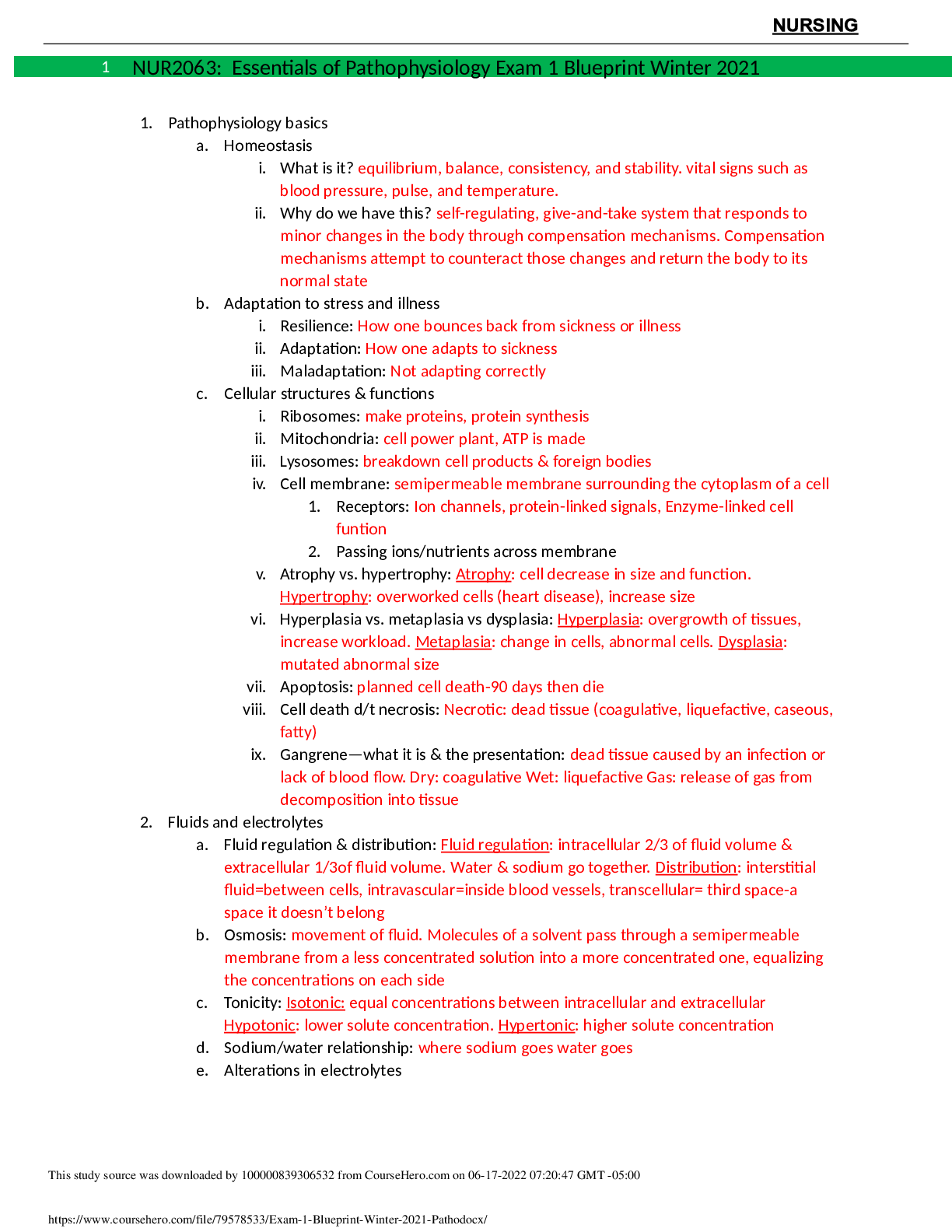
Reviews( 0 )
Document information
Connected school, study & course
About the document
Uploaded On
Sep 08, 2021
Number of pages
7
Written in
Additional information
This document has been written for:
Uploaded
Sep 08, 2021
Downloads
0
Views
57

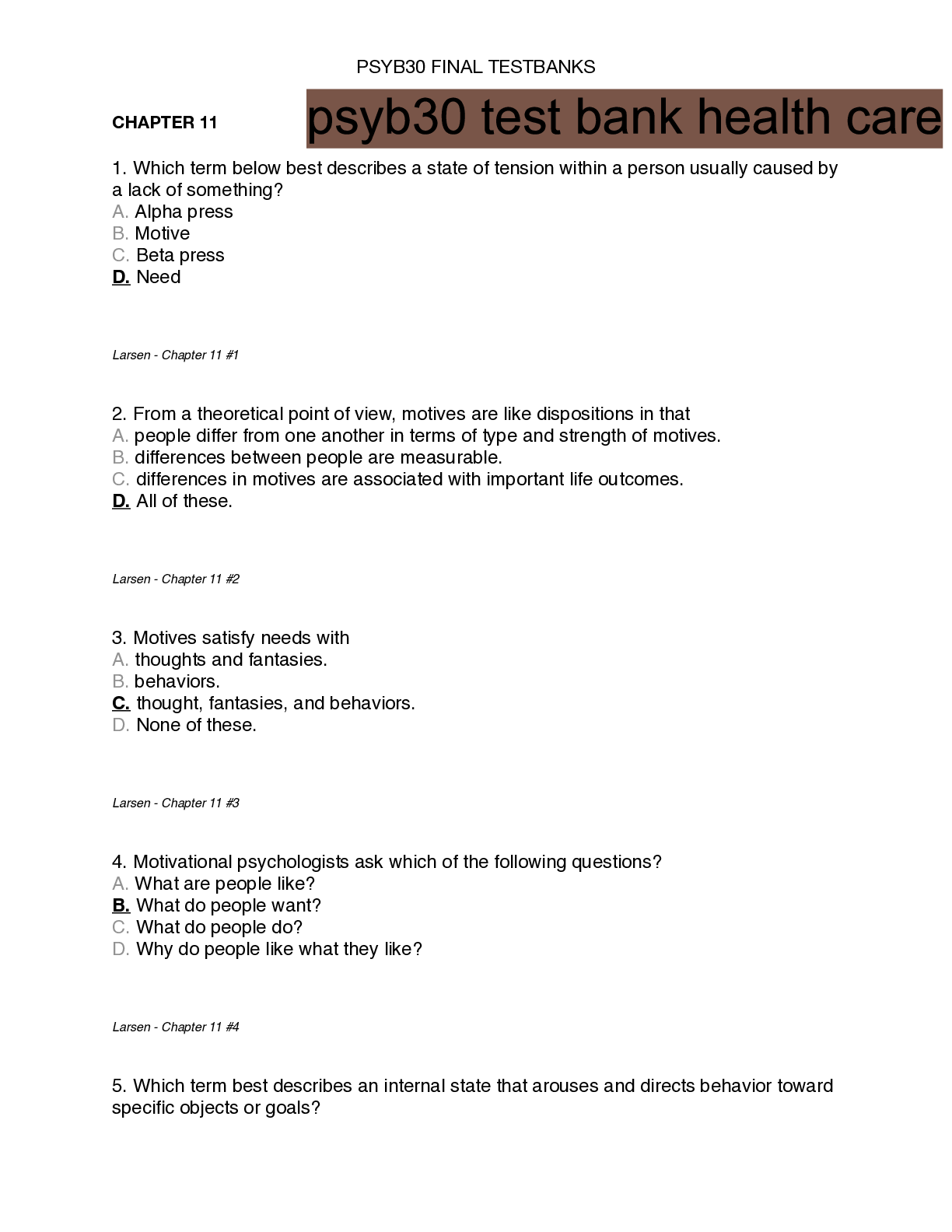
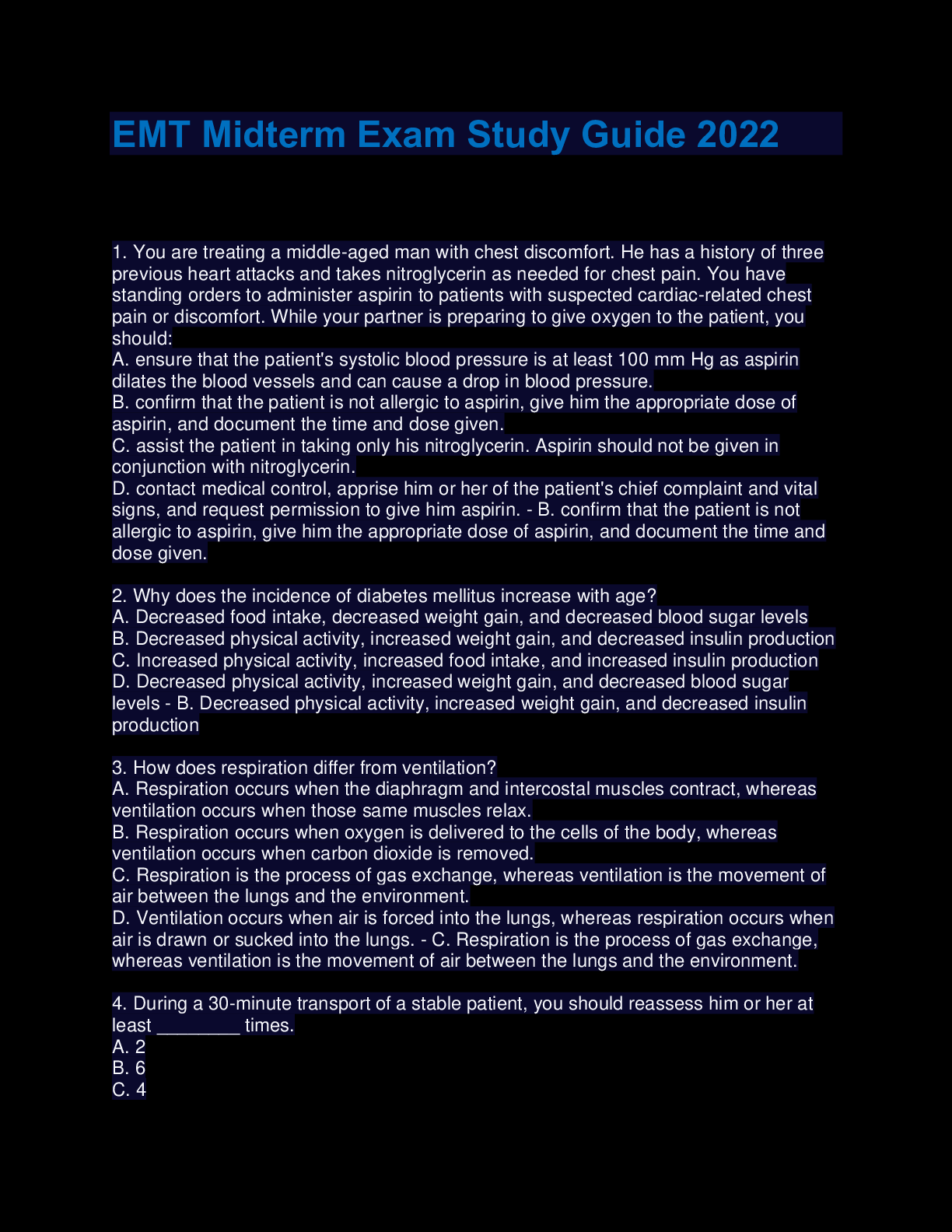
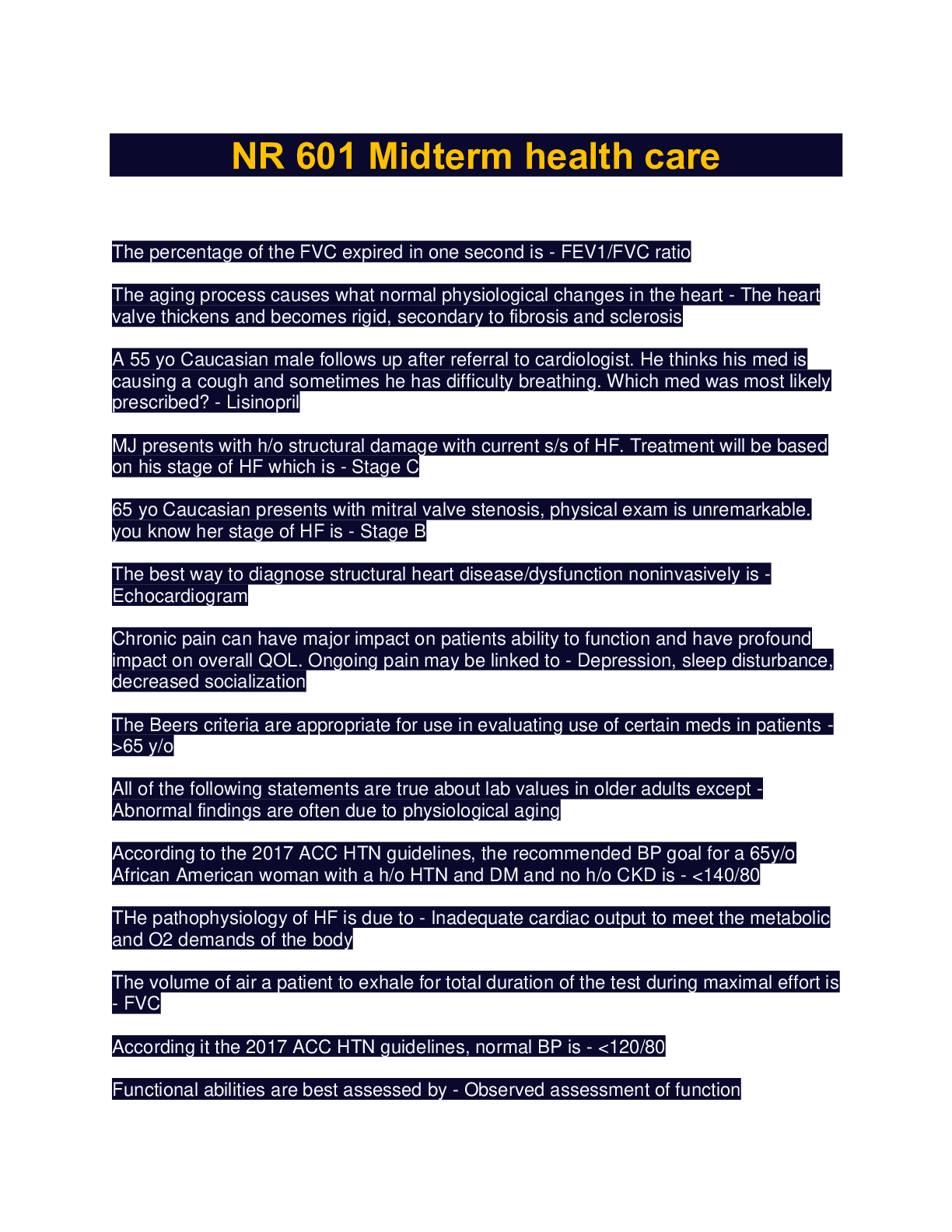


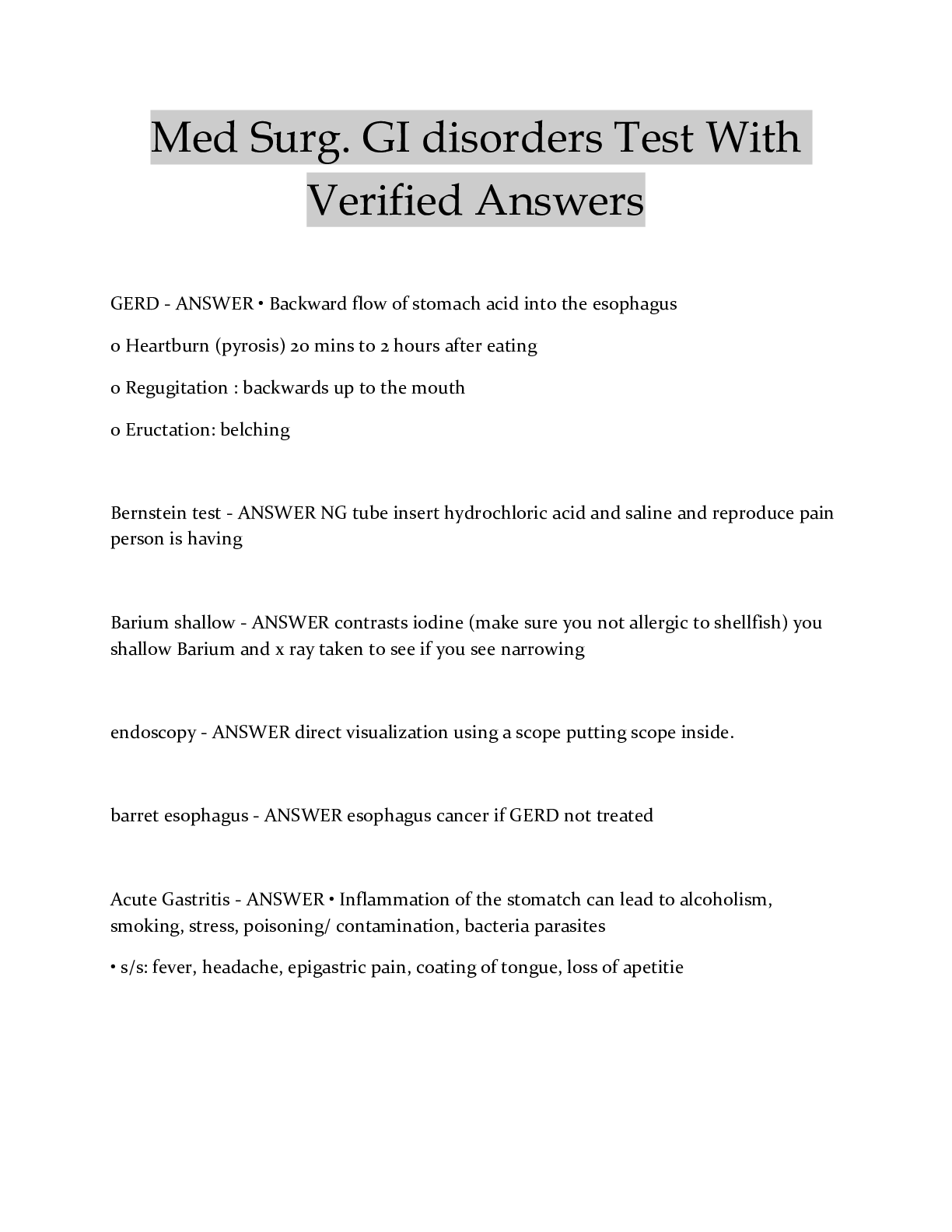
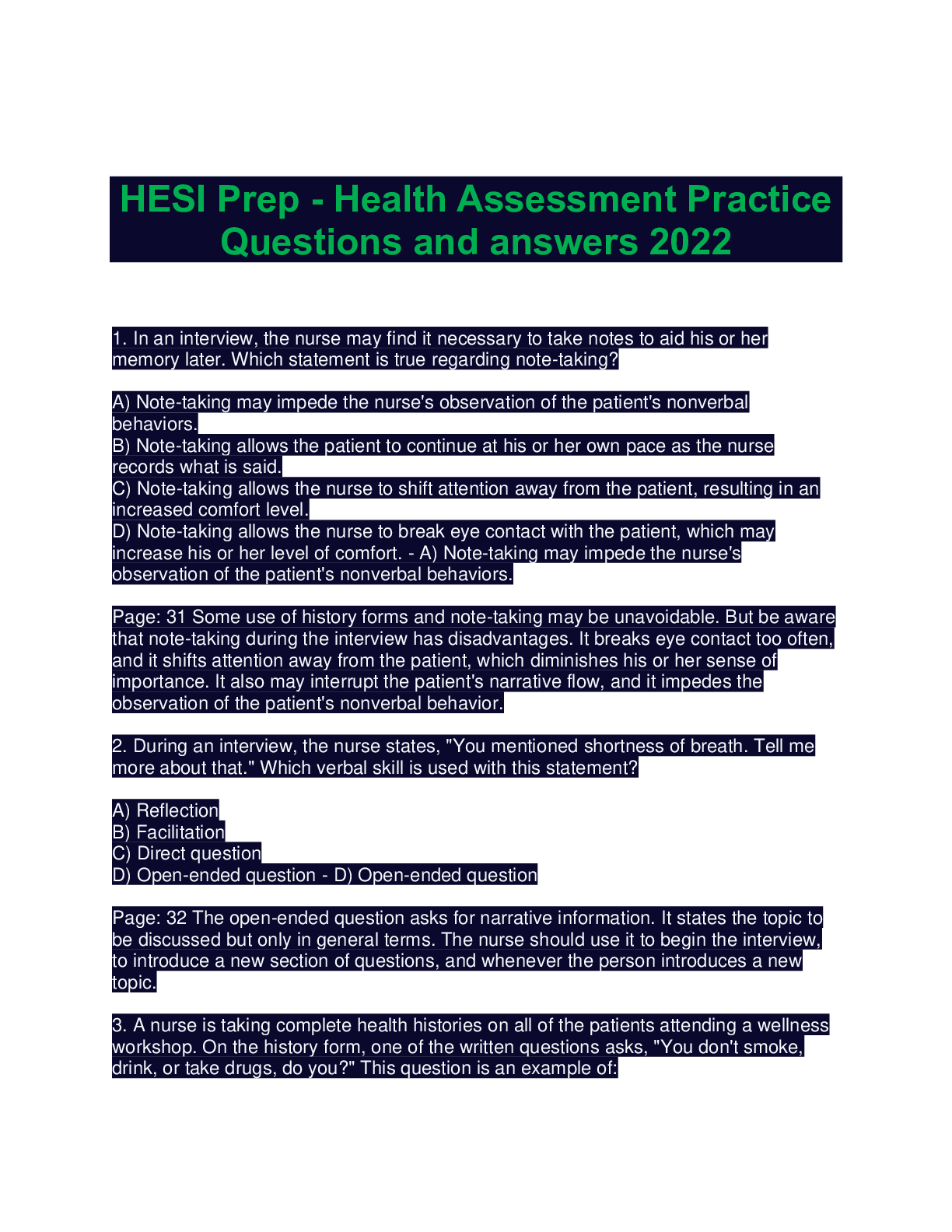
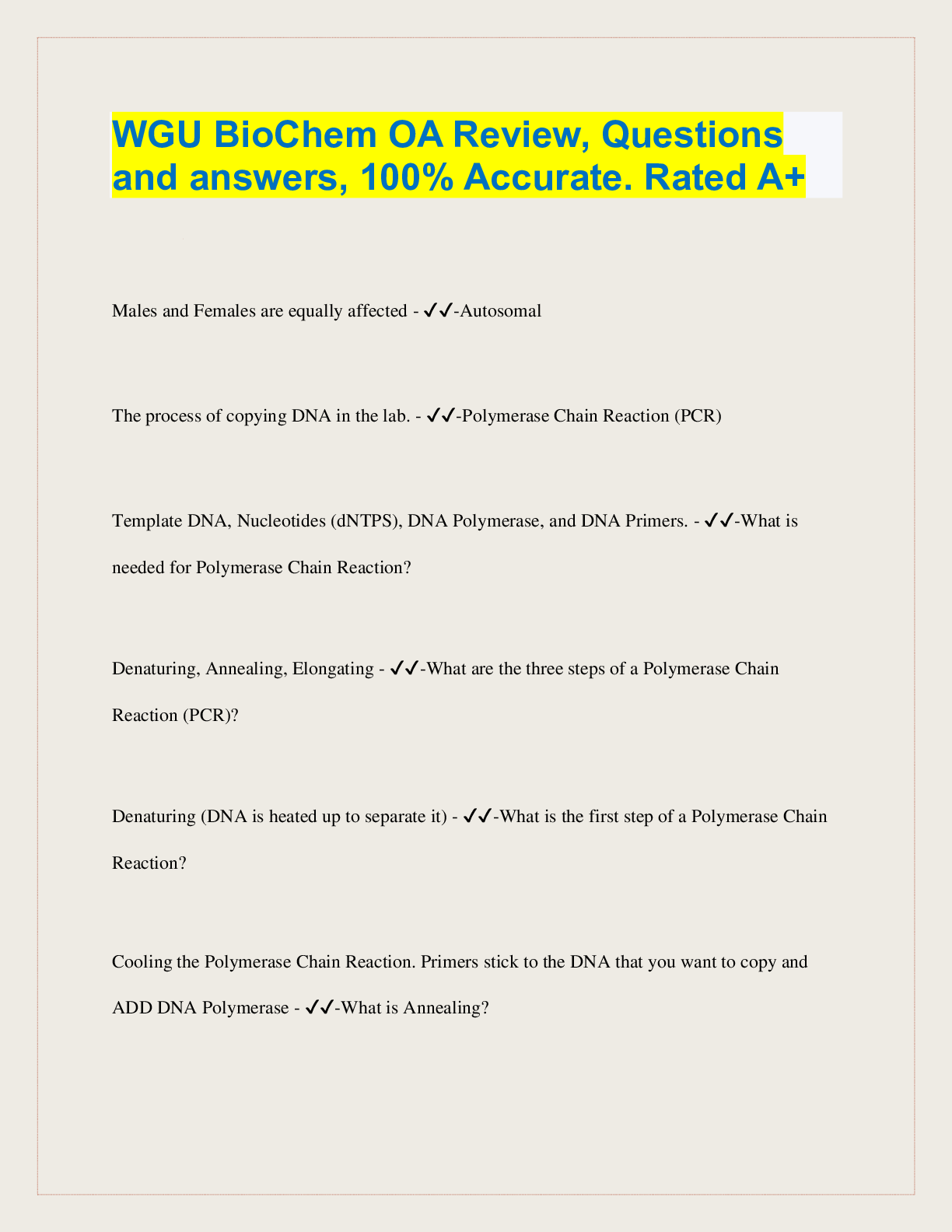
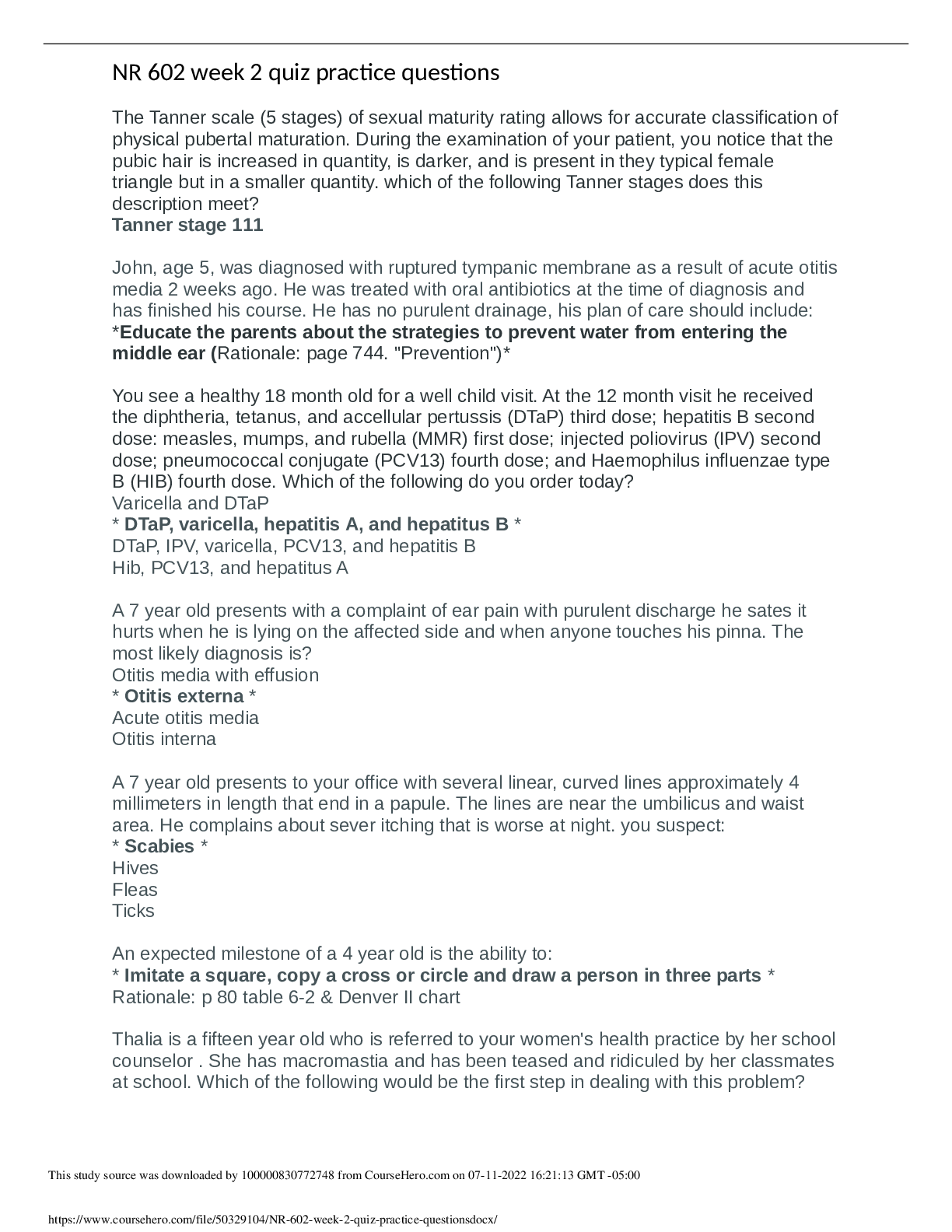
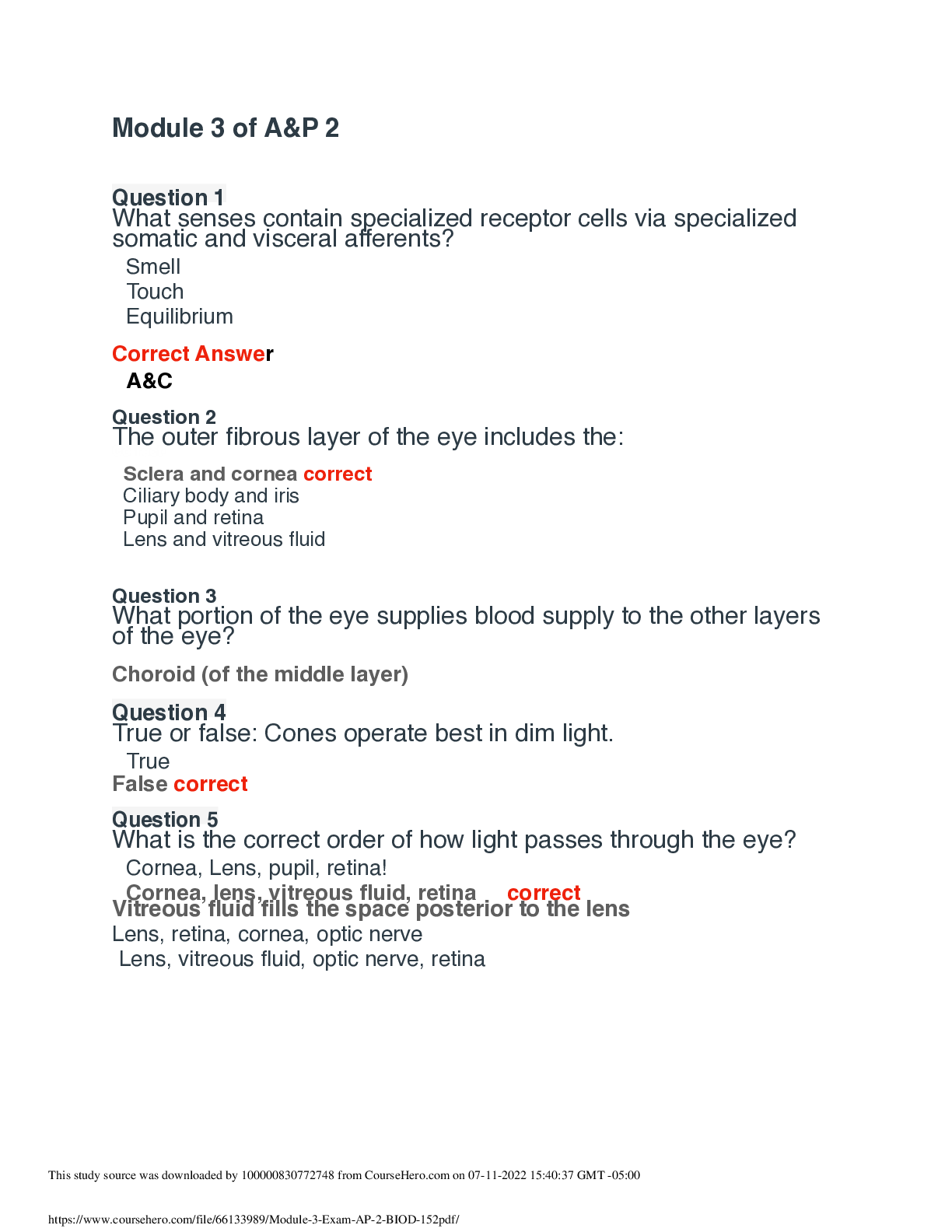
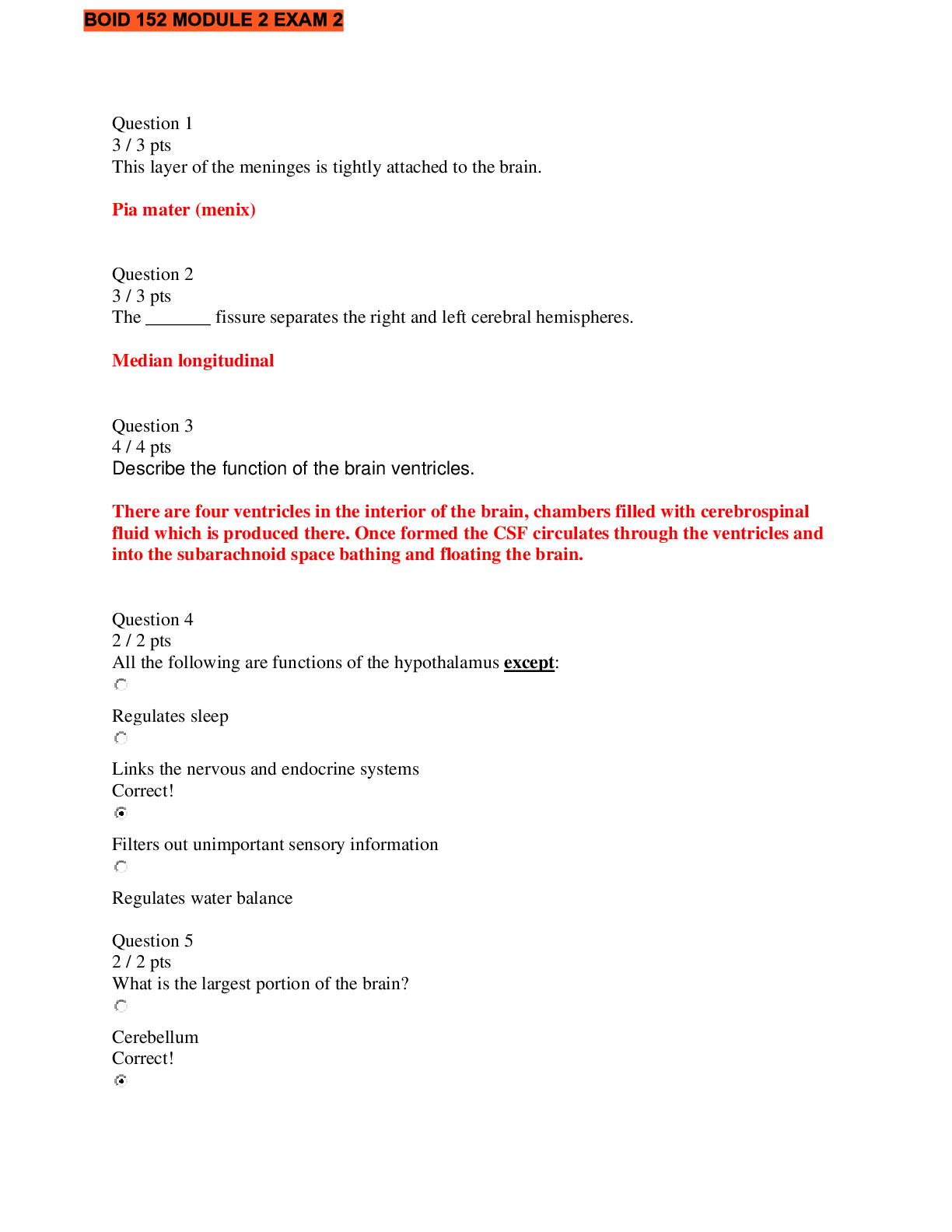
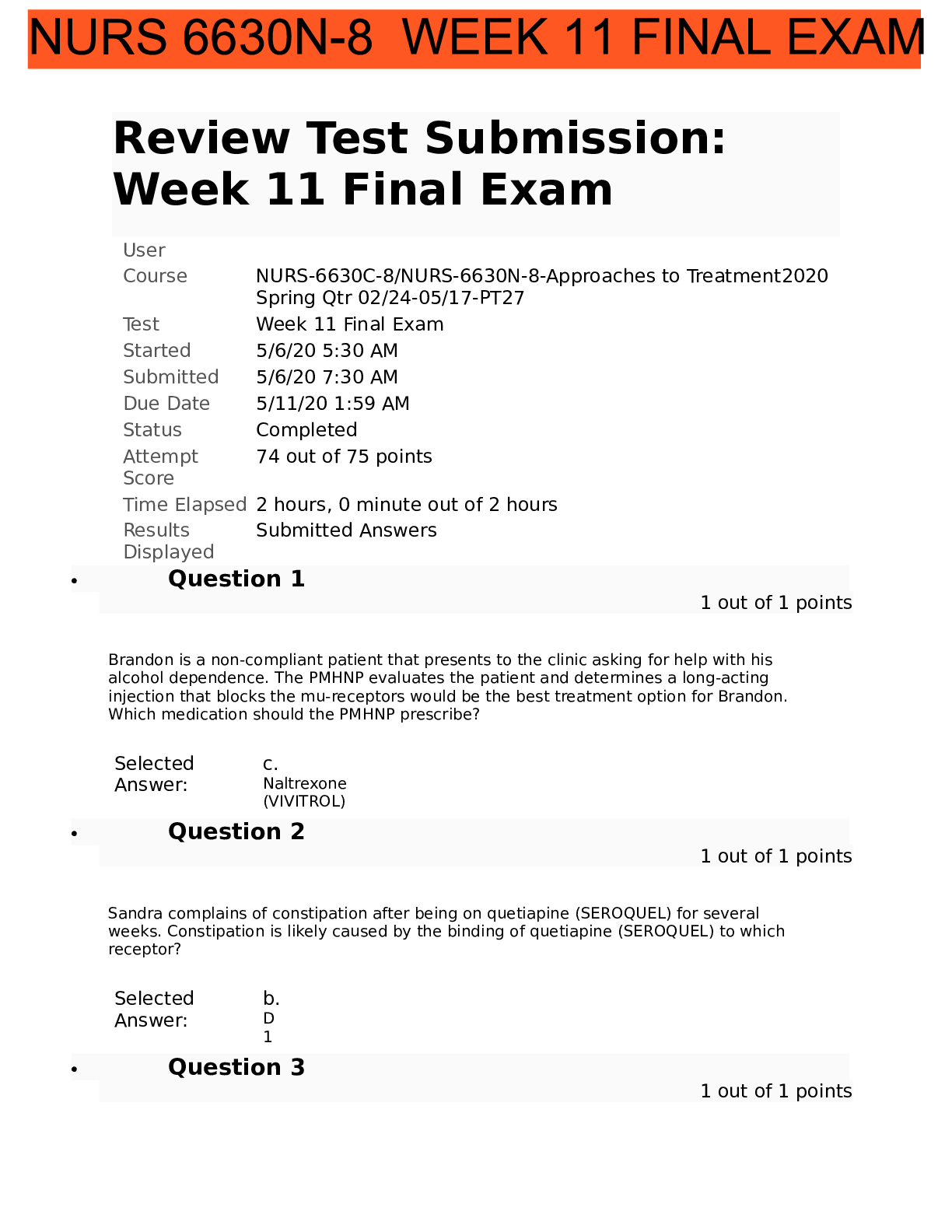

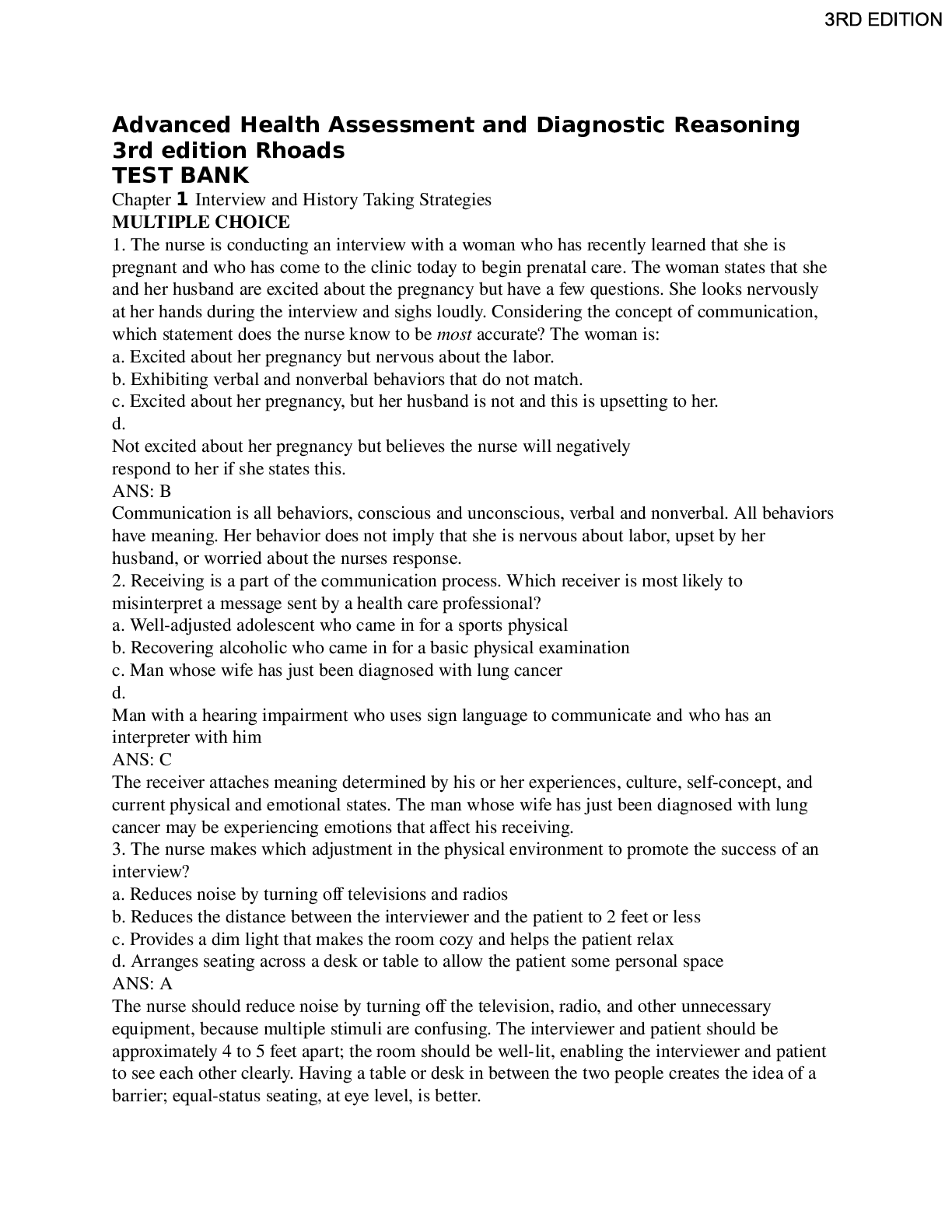
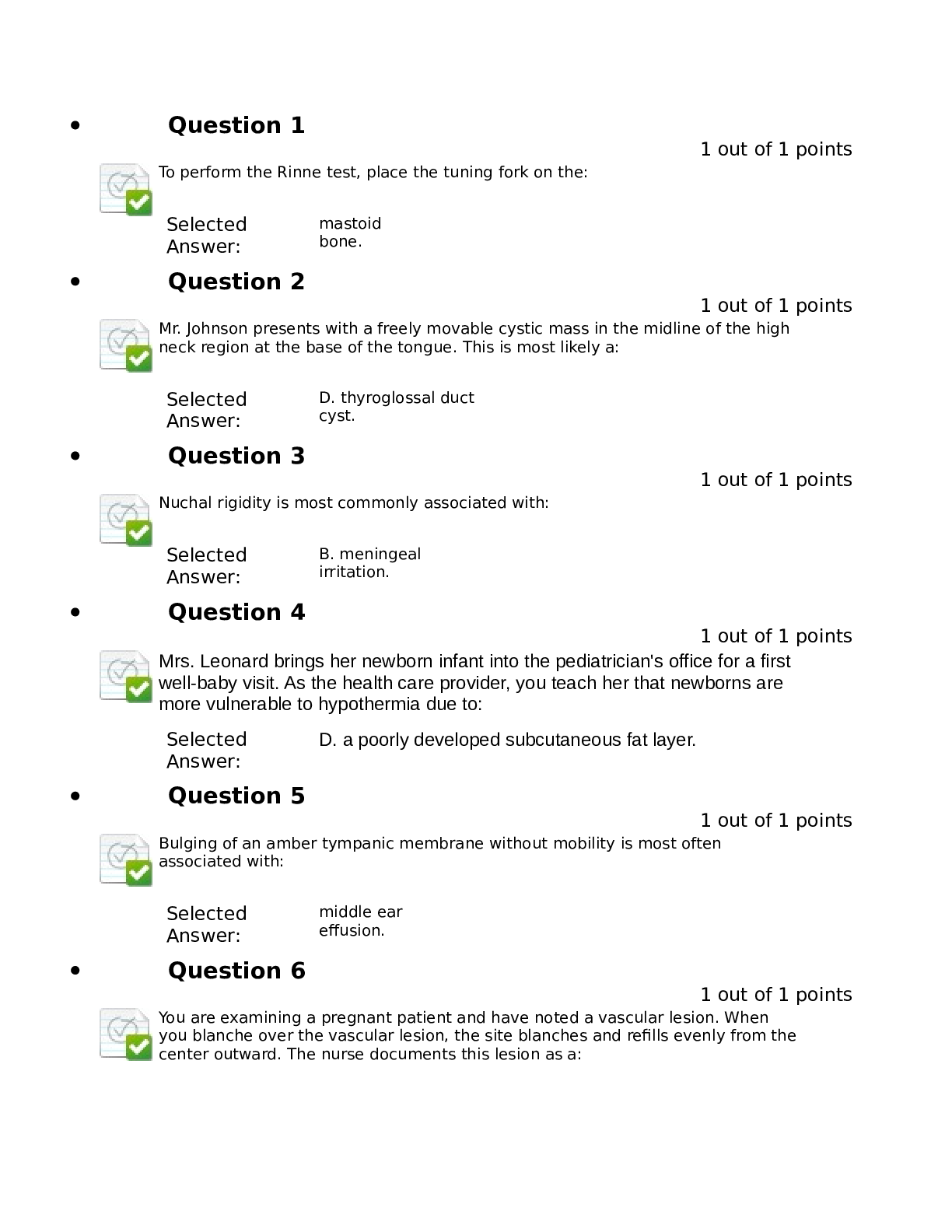
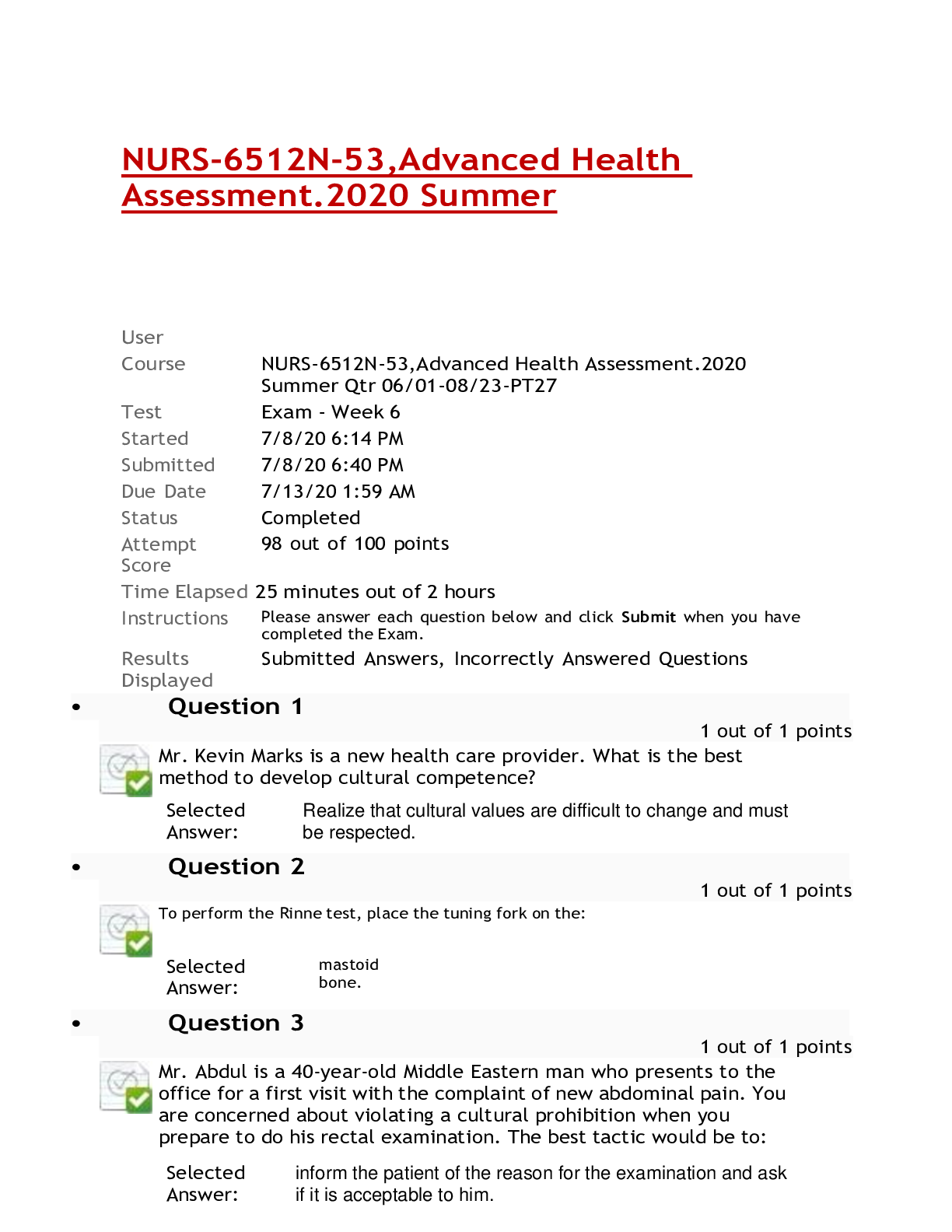
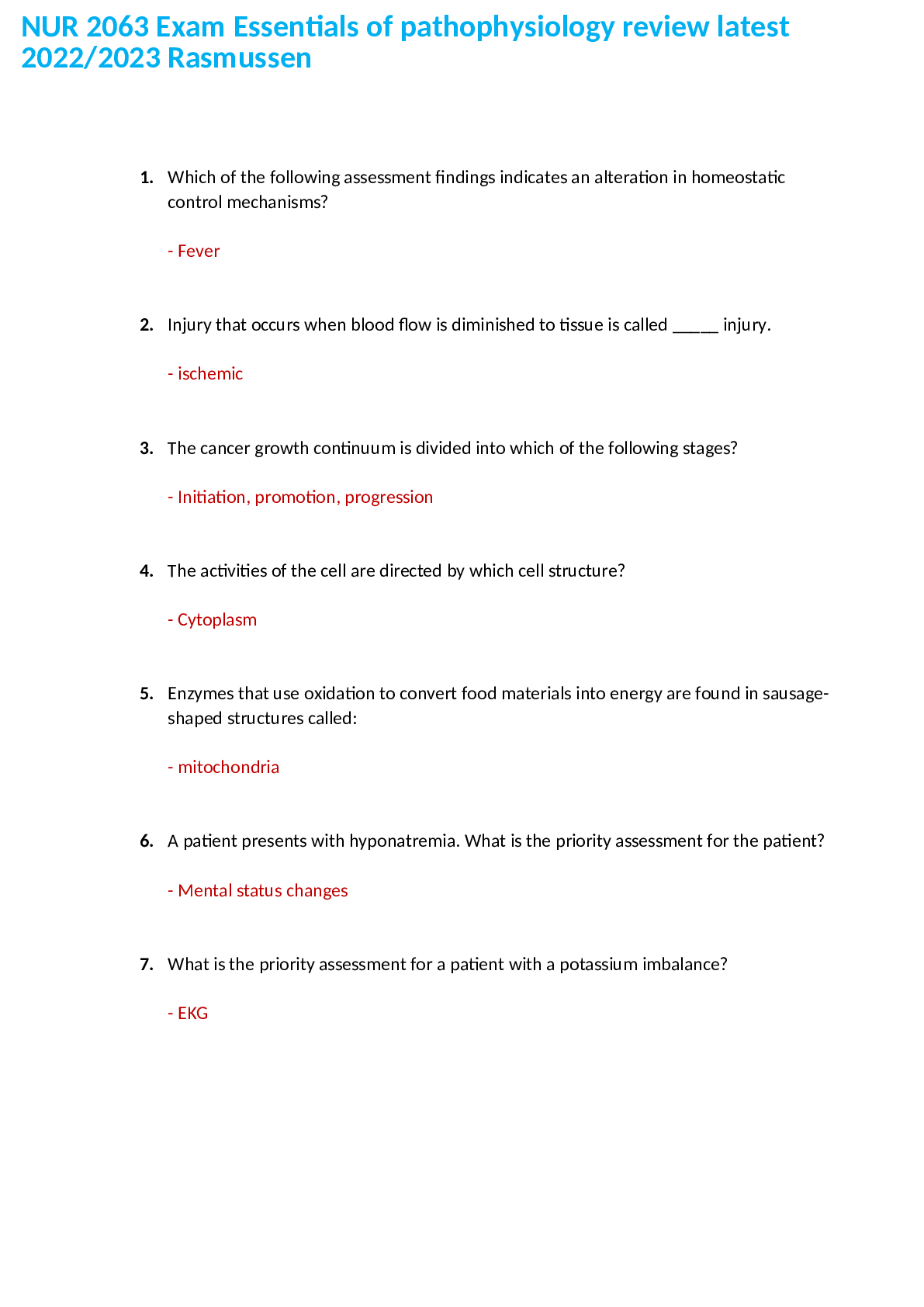
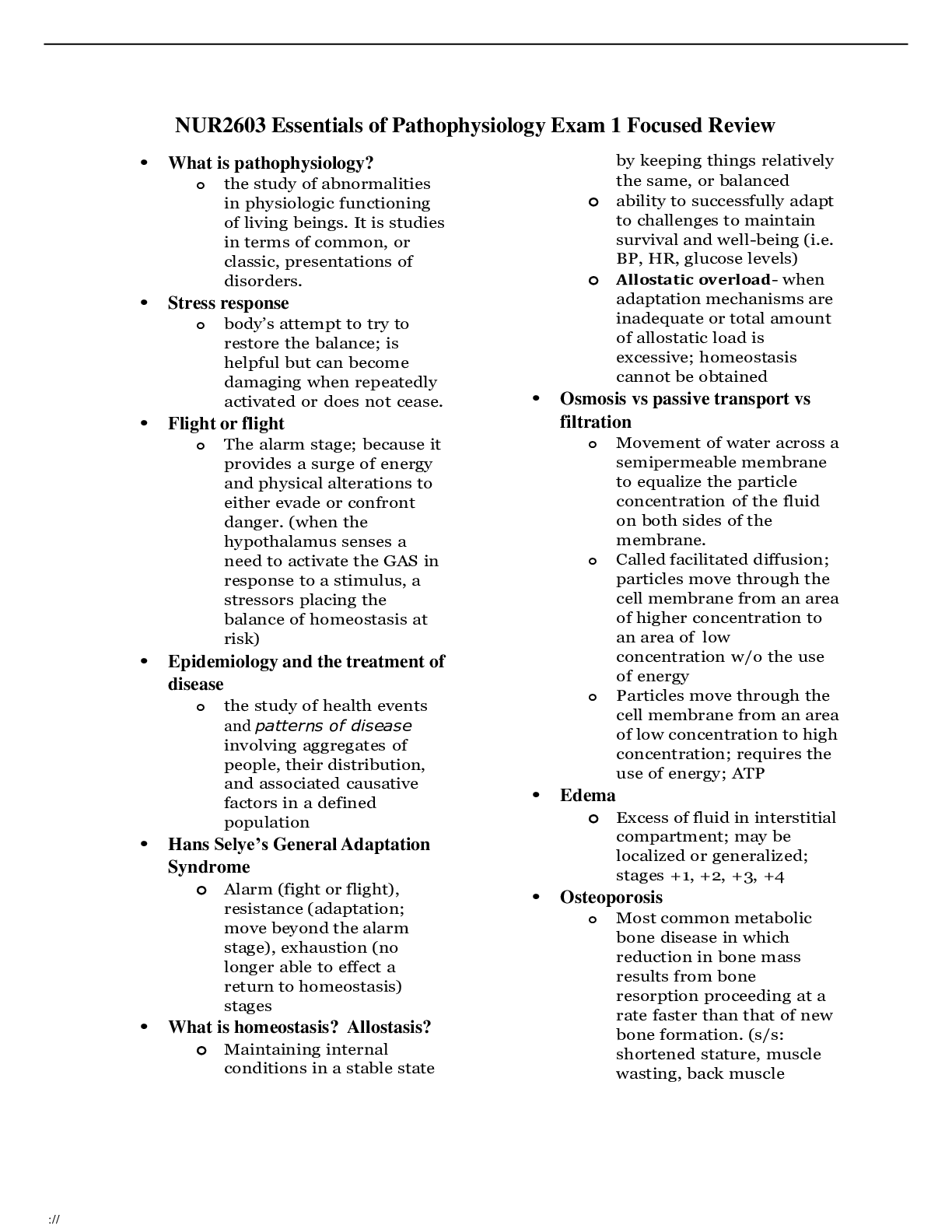
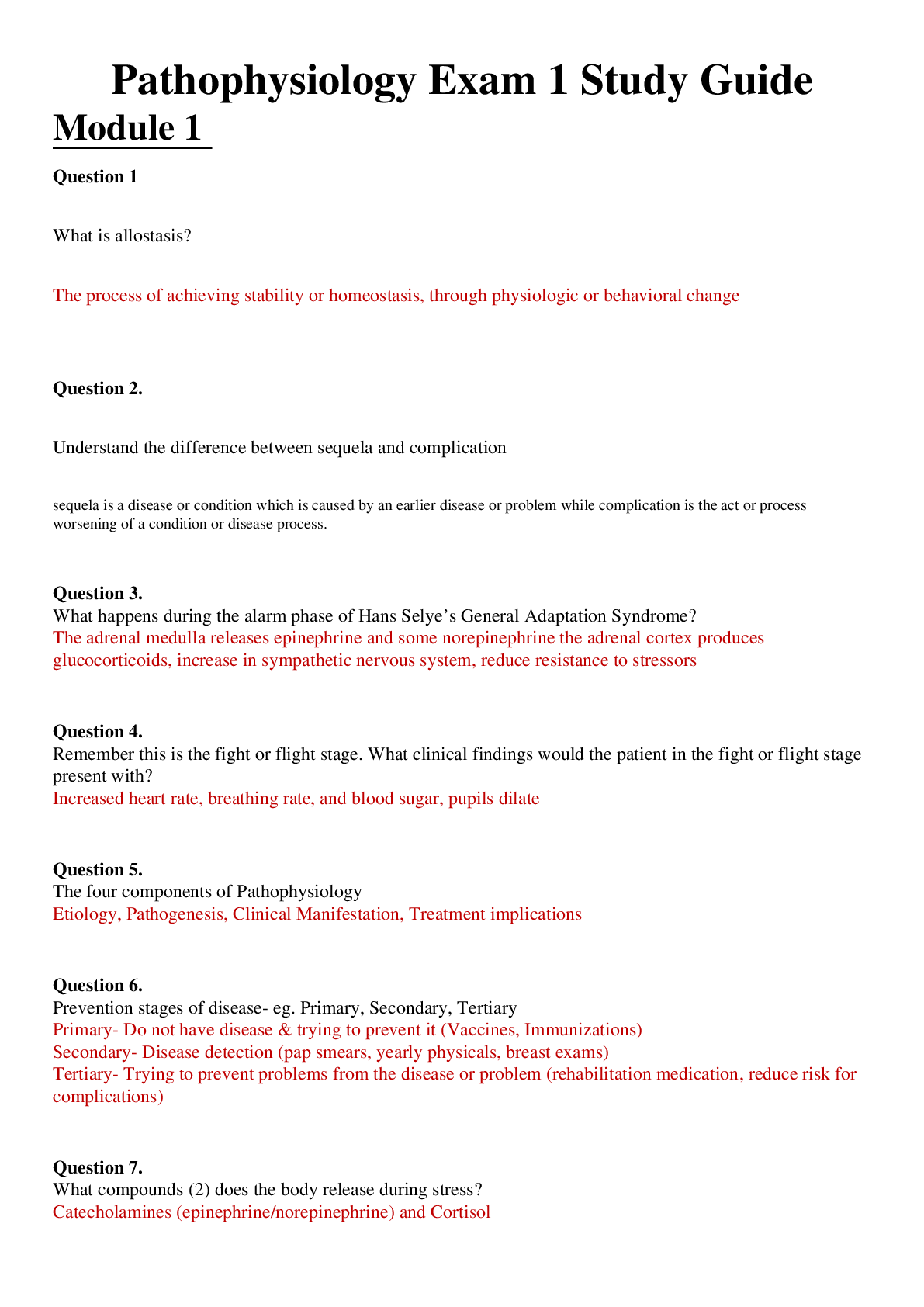
 Rasmussen.png)



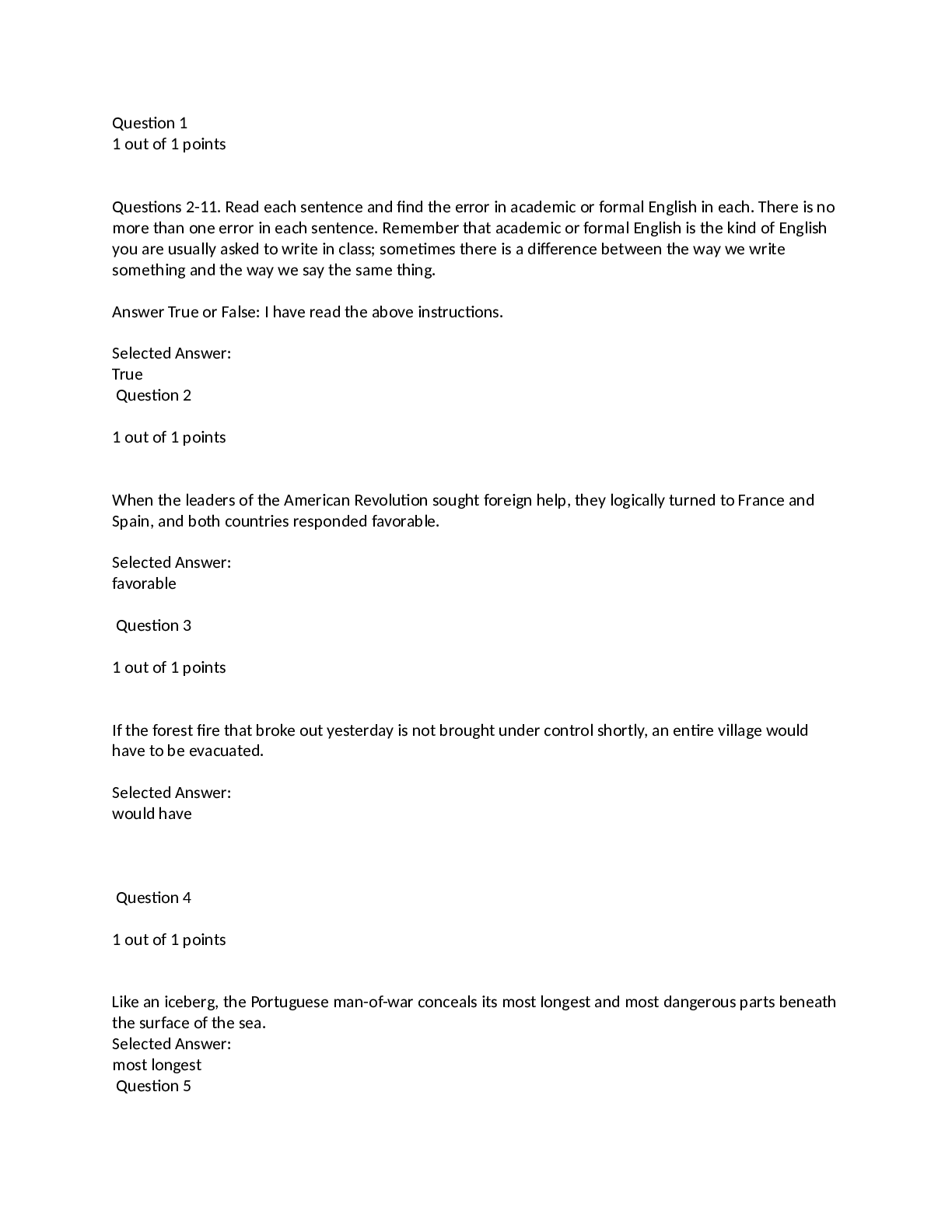
.png)
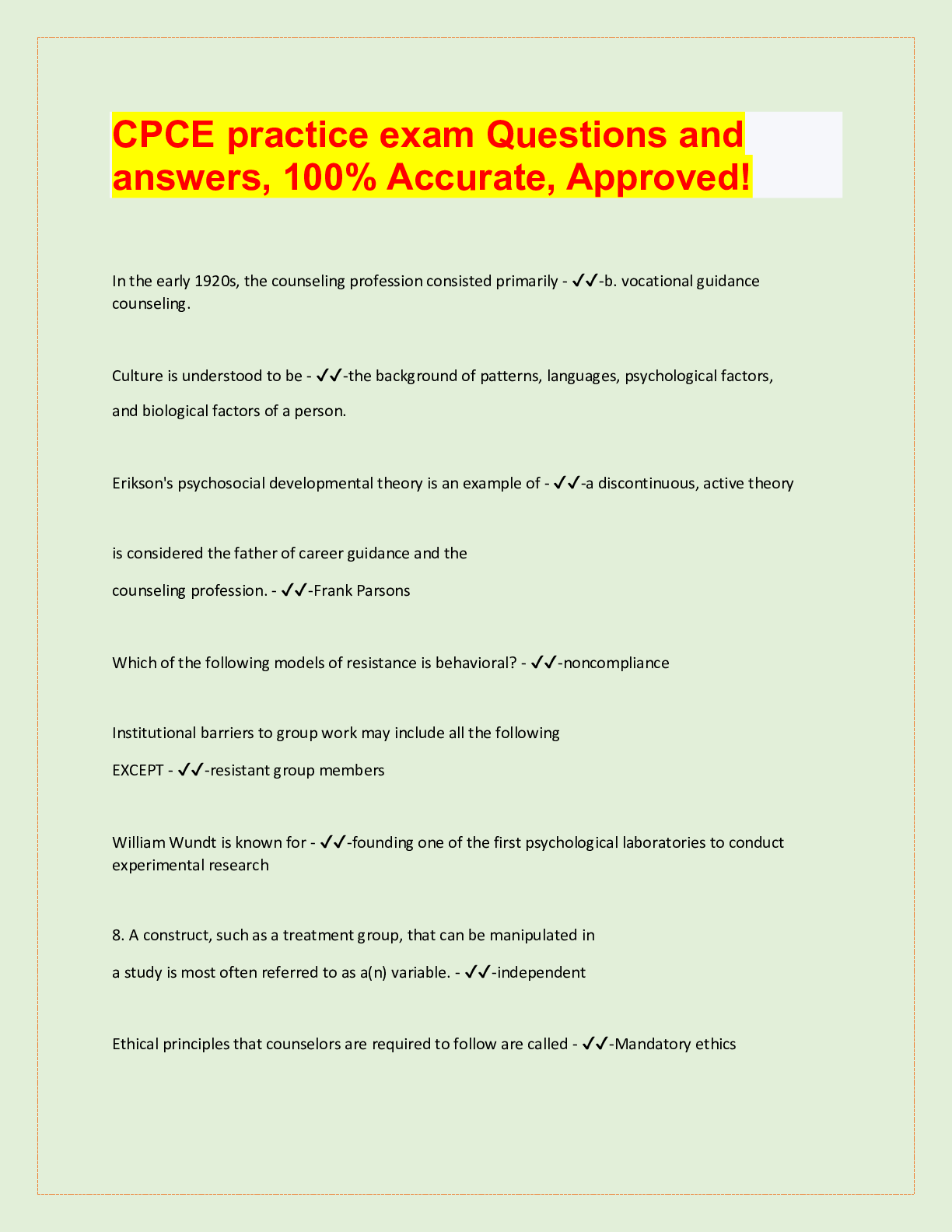
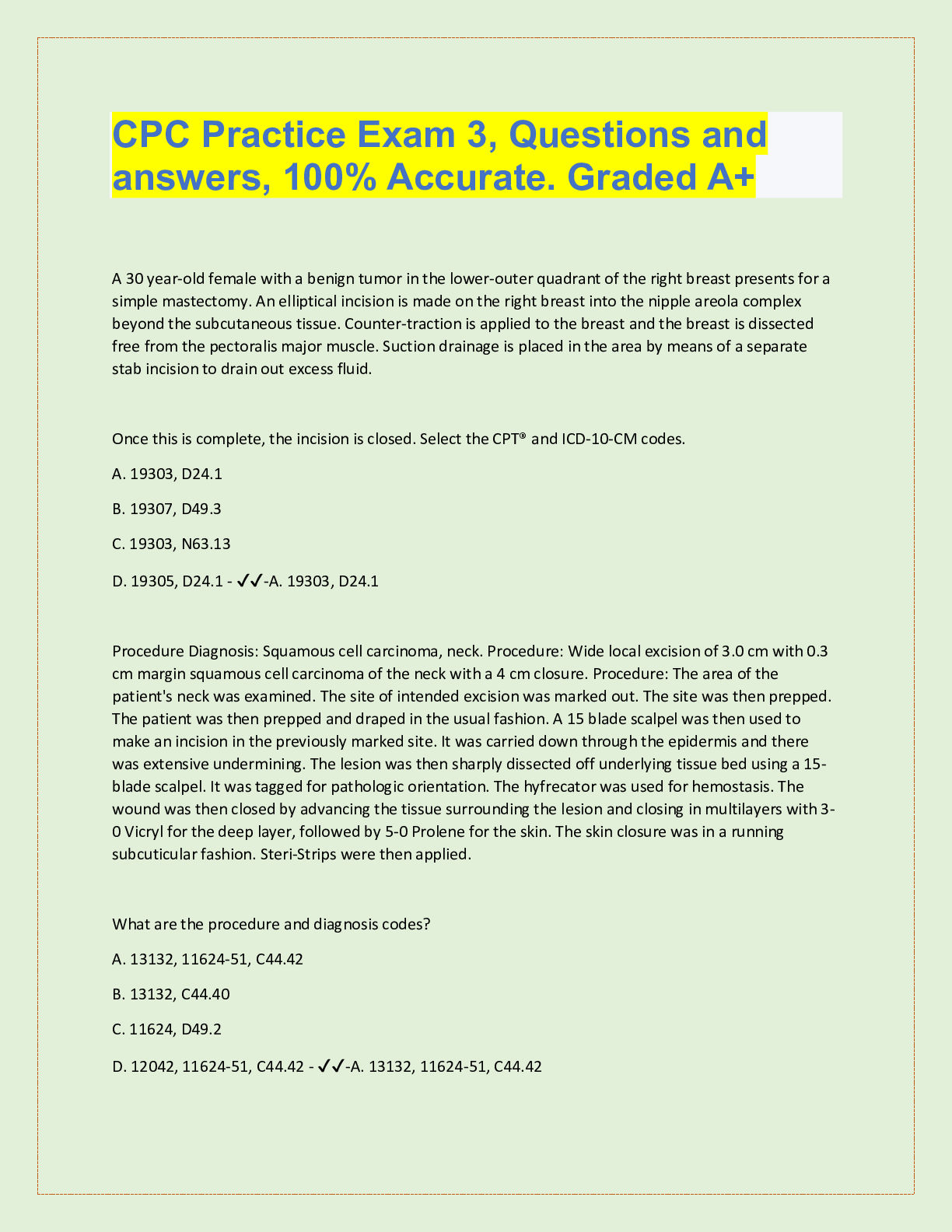
.png)


.png)


.png)

